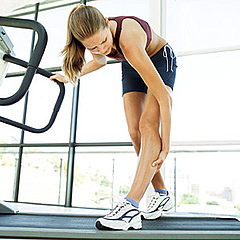What are the benefits of Lymphatic Drainage Therapy for post surgery recovery?
The lymphatic system is usually compromised following the trauma of surgery, with fluids tending to accumulate, leading to swelling, mobility problems and general discomfort.’
For example, breast reduction or post mastectomy can result in excess lymph fluid accumulating in the body. Manual lymphatic drainage massage, or “lymphatic drainage” may be a very powerful and effective natural means to control common post-surgical lymphedema, a condition causes a visible swelling due to lymph fluid retention. Lymphatic drainage massage actually moves stagnant lymphatic fluid that builds around surgery and incision sites.
According to the National Lymphedema Network, if lymph nodes are removed, there is always a risk of developing lymphedema anywhere from hours after the surgery to 20 years later.
Lymphatic drainage can increase the volume of lymph flow by as much as 20 times, vastly increasing the system’s ability to remove toxins and infectious materials as well.
Moreover, lymphatic drainage massage can greatly aids in reducing bruising, speed up wound healing after surgery, and detoxify the body.
What is a Manual Lymphatic Drainage treatment like? Is it painful?
While some of post-op patients could be in extreme pain and can’t bear the thought of someone applying even the slightest bit of pressure to their wounds, in most cases they are pleasantly surprised by Manual Lymph Drainage. In fact, many times clients end up sleeping through most of the treatment.
Manual Lymph Drainage in reality feels incredibly gentle and relaxing. This is so because therapists use their fingers or hands in a light, feathery manner to help guide excess lymphatic fluid toward the nearest group of lymph nodes. Prior to that, therapists “open” the lymph nodes by gentle “pumping” them. The treatment is performed bare skin, with no oil.
In a case where lymph nodes have been removed, therapists can also re-direct lymph flow around a problem, bypassing those areas and taking fluid to the next set of available or desirable nodes along the system.
One of the ways a patient will know that Manual Lymph Drainage is working is the common side effect of getting a dry mouth or dry eyes (if you wear contact lenses they should be removed prior to the session).
After lymphatic drainage, some patients may experience fatigue, overwhelming thirst, and nausea or vomiting.
It is also common to have an increased need to urinate soon after a treatment and for several hours thereafter, as excess fluids that were moved from the tissues are now ready to be excreted as urine.
It is important for patients to drink plenty of water after a session is completed.
Those who are considering this procedure may want to consult with their physician in order to make sure that its risks do not outweigh the benefits.
This was written by Jasmina Paulis RMT
References:
1 Wittlinger, H. & G. Textbook of Dr Vodder’s Manual Lymph Drainage, Vol 1. Haug Publishing. Heidelberg. ISBN 3-7760-1732-5. 1998.
2 Kasseroller Renato. Compendium of Dr Vodder’s Manual Lymph Drainage. Haug Publishing. Heidelburg. ISBN 3-8304-0667-3. 1998.
3 Hurz Ingrid. Textbook of Dr Vodder’s Manual Lymph Drainage, Vol 2:Therapy. Haug Publishing. Heidelberg. ISBN 3-8304-0689-4. 1997.
4 Baumeister RGH et al. Post Traumatic Lymphoedema. In Weissleder Horst and Schuchhardt Christian eds. Lymphedema Diagnosis and Therapy. Viavartal Verlag, Koln. ISBN 3-934371-24-8. 2001.
5 Rettray F.S. and L.M. Ludwig. 2000. Edema. In “Clinical Massage Therapy” pp.217-241. Elora, ON: Talus Incorporated

